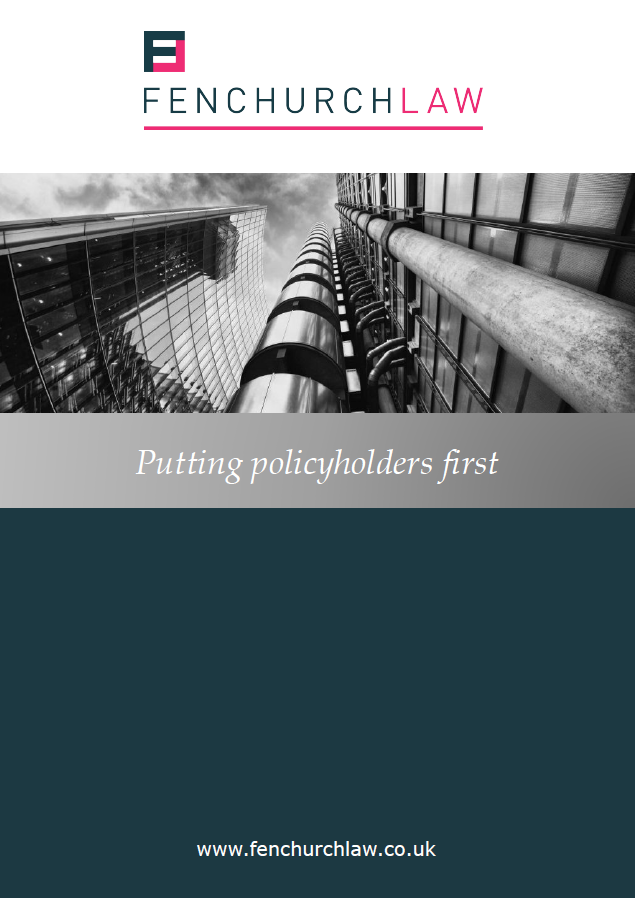
Policy Cover for Cladding “Damage”
A combustible cladding crisis has engulfed the construction sector in recent years, with tragic fires in apartment blocks in London, Melbourne, Dubai and Valencia indicative of systemic global risks. External wall panels, widely used since the 1990’s to reface high-rise buildings, have been exposed in many cases as hazardous and unsuitable, compounded by fire stopping and compartmentation defects, resulting in an avalanche of claims against developers, owners, contractors, consultants and insurers.
Rectification costs are potentially recoverable under latent defects policies, covering structural or safety issues affecting new build developments, or under professional indemnity policies, in response to third party claims against designers arising from negligence in the course of their professional duties. This article focuses on recent authority in common law jurisdictions which suggests that the incorporation of defective cladding panels may constitute physical damage for the purpose of other types of liability or property insurance.
Owners v Fairview
In Owners – Strata Plan No 91806 v Fairview Architectural (No.3) [2023] the defendant (“Fairview”) manufactured and supplied combustible Vitrabond panels, installed on two high-rise residential buildings in Sydney. Following an order by the local council to remove the panels, the owner commenced representative proceedings against Fairview alleging that the panels were not of acceptable quality, in breach of statutory requirements. The owner applied to join Fairview’s liability insurer to the claim, on the basis that Fairview’s potential liability arose from “property damage” caused by an “occurrence” (defined in the policy as an event resulting in property damage that was neither expected nor intended).
Justice Wigney acknowledged that the question of coverage was “not easy … involving matters of degree and characterisation”, with many of the authorities turning on their own unique facts and the more contentious cases involving alleged physical damage based on a loss of functionality. Notably the New South Wales Court of Appeal has rejected an argument that the blockage of a grain silo by grain constituted physical damage (Transfield v GIO (1996)).
The Federal Court held that it was at least arguable the liability policy would respond to the underlying claims, since the affixation of cladding panels “had an instant and damaging effect on the building because the panels posed an immediate and unacceptable danger to the residents of the building”. Physical damage to the facade occurred during the period of insurance, when the panels were attached by insertion of nails and screws into the walls of the building using a top hat structure. It was held that this could be characterised as an “occurrence” because Fairview did not expect or intend the panels to be combustible or defective, nor that the panels would have to be removed.
In reaching this conclusion, Justice Wigney considered Australian Plywoods v FAI (1992), where the Queensland Court of Appeal held that physical damage to the hull of a boat occurred at the time that defective plywood was attached using screws and glue; and R & B Directional Drilling v CGU (2019), where the Federal Court determined there was no physical injury to a tunnel by accidental filling of a conduit pipe with concrete, as the pipe could be removed leaving the tunnel in the same physical state as before the defective work.
Justice Wigney distinguished the decision in Pilkington v CGU [2005], where the English Court of Appeal held that installation of a small number of defective glass panels in the Waterloo Eurostar Terminal had not caused physical damage to the terminal building, to trigger cover under the manufacturer’s products liability policy. In that case, the owner did not remove the affected panels (so there was no physical damage associated with access, to replace defective components) and chose instead to implement safety measures to avoid the risk of shattered glass falling.
Fortuity
In English law, damage is a fortuitous change in physical condition that is adverse. The requirement for an altered physical state is crucial to distinguish between damage and defects. The fact that something is rendered less valuable or useful does not in itself constitute damage; but where the subject matter is added to, defaced or contaminated by some other substance, it is a matter of degree whether this will be regarded as affecting the physical condition of the property. Product liability insurance is triggered by personal injury, or physical loss or damage to third party property, during the period of insurance, as opposed to economic impacts such as loss of goodwill (Rodan v Commercial Union [1999]).
In Pilkington, the first instance decision – that the terminal was not physically damaged by an Occurrence which consisted of no more than the intentional installation of the product designed to be installed – was upheld on appeal. The policy wording made clear that damage or deterioration confined to the product itself was excluded, i.e. the policy would only answer in respect of physical damage suffered by third party property in relation to which the product had been introduced or juxtaposed.
Lord Justice Potter observed:
“Damage requires some altered state, the relevant alteration being harmful in the commercial context. This plainly covers a situation where there is a poisoning or contaminating effect upon the property of a third party as a result of the introduction or intermixture of the product supplied … difficulties of application of such a test may arise in cases where a product supplied is installed by attachment to other objects in a situation in which it remains separately identifiable, but by reason of physical change or other deterioration within it, it requires to be renewed or replaced.”
American Cases
The Court of Appeal in Pilkington considered various American authorities including Eljer Manufacturing v Liberty Mutual (1992), in which Circuit Judge Posner in a majority judgment decided that the installation of a defective product or component into property of the buyer, in circumstances where the defect does not cause any tangible change in the property until years later, can be regarded as physical injury from the time of installation. Judge Posner considered that the presence of a potentially dangerous ‘ticking time bomb’ should be construed as injury to the structure from the time of incorporation, based on the commercial intent of the parties to the insurance contract.
The outcome seems analogous with the limitation period in tort for claims where inherent design defects give rise to economic loss in the absence of physical damage, commencing at the latest on practical completion, as discussed in URS v BDW [2023].
In a dissenting judgment in Eljer, Circuit Judge Cudahy rejected the majority view, and this reasoning was endorsed by the Court of Appeal in Pilkington as better reflecting the approach of an English court. Lord Justice Potter referred to the comments of Stuart-Smith LJ in Yorkshire Water v Sun Alliance [1997] as follows:
“… the American Courts adopt a much more benign attitude towards the insured … based variously on the “folly” argument … or that insurance contracts are: “contracts of adhesion between parties who are not equally situated” … or because the Courts have … adopted the principle of giving effect to the objectively reasonable expectations of the insured for the purpose of rendering a fair interpretation of the boundaries of insurance cover … For the most part these are notions which reflect a substantial element of public policy and are not part of the principles of construction of contracts under English law.”
Arguably this benevolent approach is reflected in recent US decisions on defectively mixed concrete, suggesting that “any bad effect” may qualify as damage in the context of LEG defect exclusion clauses under Construction All Risks policies (South Capitol Bridgebuilders [2023]; Archer [2024]).
Contamination
In determining the issue in Fairview, Justice Wigney was influenced by cases concerning the harmful effects of asbestos, observing that:
“The affixation of combustible panels to a residential building can … be compared with the integration of a dangerous or toxic substance, such as asbestos, into a building. Just as the integration into a building of a potentially hazardous material such as asbestos resulted in physical injury to the building at the time of installation (even if at that time the dangers were not realised, or the toxic substances had not been released) … so the affixation to a building of potentially hazardous combustible panels can be seen to result in physical damage to the building at the point of installation.”
As noted by Paul Reed KC in Construction All Risks [at 14-014] some English and Australian authorities suggest that the courts may be willing to treat contamination as a separate category of damage that does not require an obvious physical change in characteristics of the property insured.
Applying the courts’ reasoning in The Orjula [1995] and Hunter v Canary Wharf [1996] it may be possible to infer that the property has undergone a change in physical condition, where remedial costs have been incurred.
Conclusion
Insurers would typically argue that no fortuitous physical damage has occurred in respect of combustible cladding panels, in the absence of a fire or other adverse event post-installation, and any need for replacement following identification of harmful characteristics represents, at most, an economic loss to owners.
By contrast, recent authorities in Australia and the US lend support for the proposition that damage may be established based on changes in condition through physical attachment of cladding panels, involving integration of dangerous substances with a ‘contaminating’ effect, given the adverse unexpected consequences and need for remedial works. Each case will depend on its individual facts in terms of the location of insured property, type of external wall system(s), and applicable policy wording.
The argument remains largely untested in the English courts, presenting a novel potential route to recovery under insurance policies triggered by physical damage.
Amy Lacey is a Partner at Fenchurch Law
Other news
Timing is everything – Makin v QBE and the cost of not complying with a condition precedent
3 July 2025
This recent decision from the High Court provides a powerful reminder of the consequences of not complying with a…
You may also be interested in:
Archives
Categories
- Stonegate
- Newsletter
- Events
- Webinars
- Comparing German and English Insurance Law – A Series
- Construction Risks
- Operations
- Business Development
- Construction & Property Risks
- News
- International Risks
- Legislation
- Financial & Professional Risks
- Case Law
- Professional Risks
- Press Release
- Uncategorized
- The Good, the Bad and the Ugly
- Fenchurch Law Webinars



